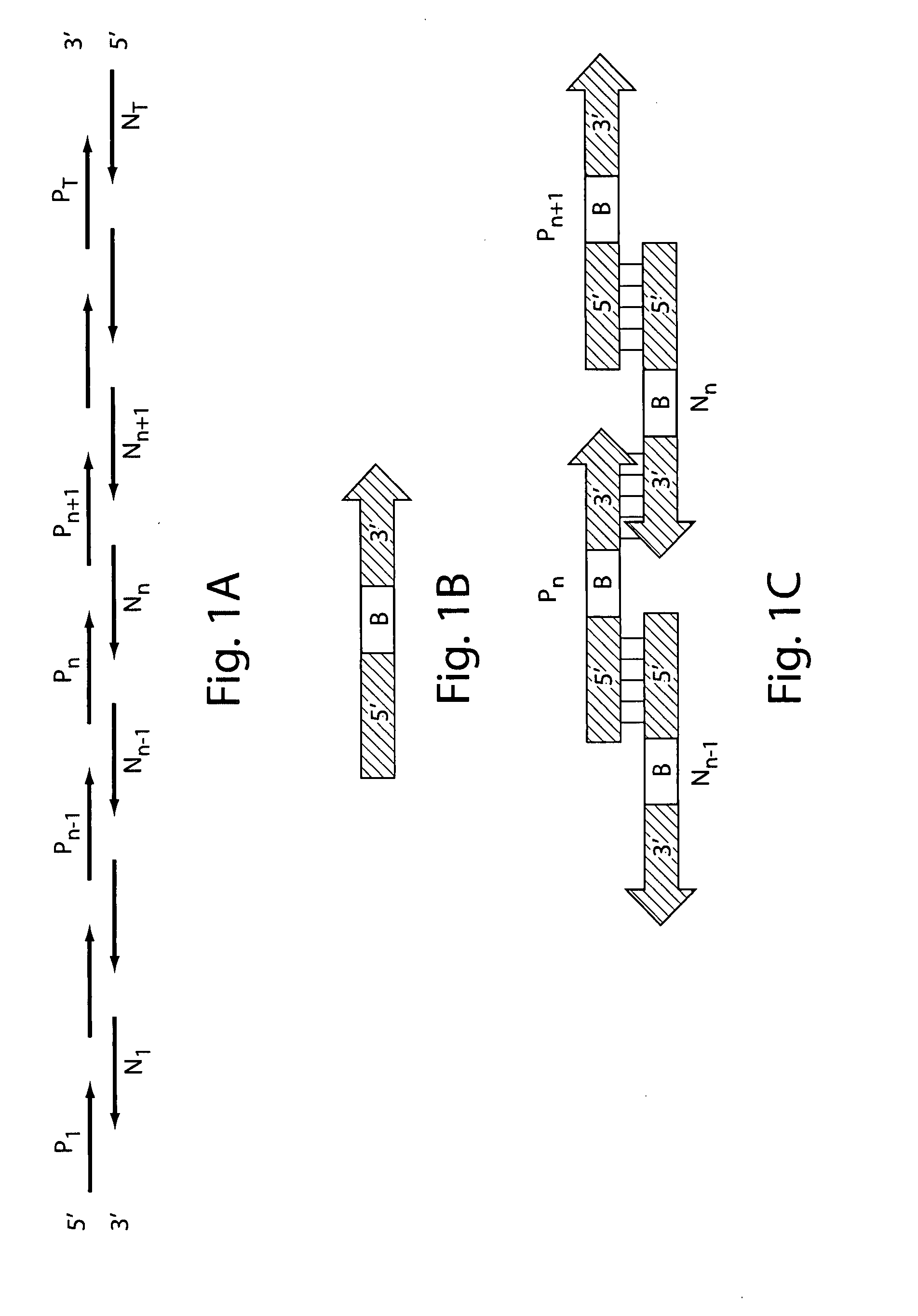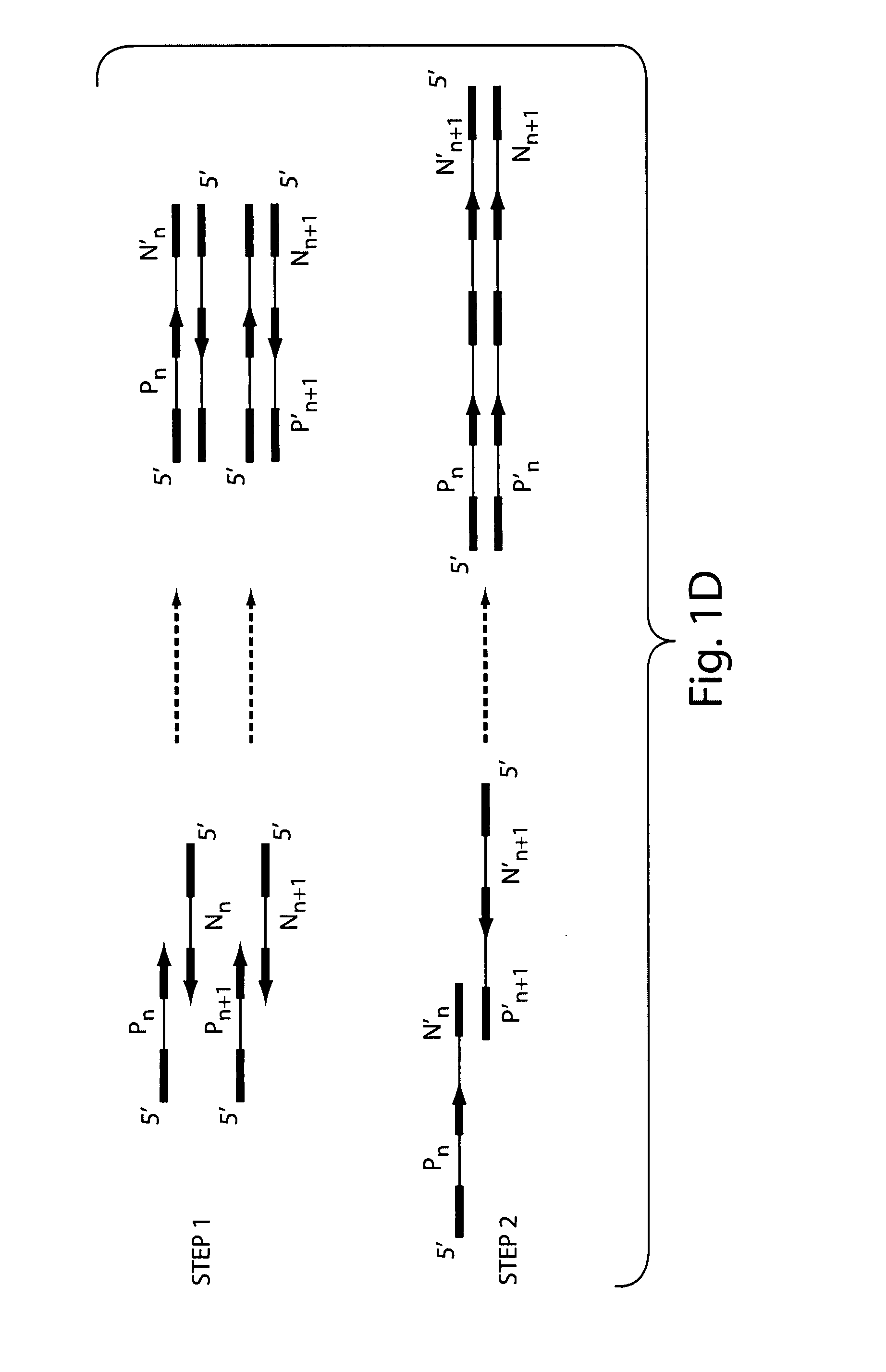Nucleic acid library design and assembly
a technology assembly, which is applied in the field of nucleic acid library design and assembly, can solve the problems of inactivation of putative therapeutic or adverse side effects, unacceptably low stability or solubility of proteins selected using unfiltered libraries, etc., and achieves low stability, poor solubility, and high immunogenicity.
- Summary
- Abstract
- Description
- Claims
- Application Information
AI Technical Summary
Benefits of technology
Problems solved by technology
Method used
Image
Examples
example 1
Nucleic Acid Fragment Assembly
[0168] Gene assembly via a 2-step PCR method: In step (1), a primerless assembly of oligonucleotides is performed and in step (2) an assembled nucleic acid fragment is amplified in a primer-based amplification.
[0169] A 993 base long promoter>EGFP construct was assembled from 50-mer abutting oligonucleotides using a 2-step PCR assembly.
[0170] Mixed oligonucleotide pools were prepared as follows: 36 overlapping 50-mer oligonucleotides and two 5′ terminal 59-mers were separated into 4 pools, each corresponding to overlapping 200-300 nucleotide segments of the final construct. The total oligonucleotide concentration in each pool was 5 μM.
[0171] A primerless PCR extension reaction was used to stitch (assemble) overlapping oligonucleotides in each pool. The PCR extension reaction mixture was as follows:
oligonucleotide pool (5 μM total)1.0μl (˜25 nM final each)dNTP (10 mM each)0.5μl (250 μM final each)Pfu buffer (10x)2.0μlPfu polymerase (2.5 U / μl)0.5μldH...
example 2
Library Design for the Selection of Therapeutic Antibody Mimics
[0190] Certain embodiments of the invention may be exemplified by the design of a library for selecting therapeutic antibody mimics based on the tenth human fibronection type II domain (10Fn3), using pre-filtering for high solubility and low immunogenicity.
[0191] One possible library can be generated by randomizing twelve of the 94 amino-acid residues of 10Fn3, with the variability occurring in seven positions in loop BC (residues 23-29) and in five positions in loop DE (residues 52-56). The library will be made from two overlapping DNA fragments (“sub-libraries”), one encoding residues 1-47, and the other encoding residues 34-94. The library design and assembly may involve one or more of the following step.
[0192] 1. An initial list of sequences will be generated for each sub-library by enumerating every possible permutation of the randomized positions. The resulting starting sub-libraries will contain 207=109 sequenc...
PUM
| Property | Measurement | Unit |
|---|---|---|
| solubility | aaaaa | aaaaa |
| stability | aaaaa | aaaaa |
| binding affinity | aaaaa | aaaaa |
Abstract
Description
Claims
Application Information
 Login to View More
Login to View More - R&D
- Intellectual Property
- Life Sciences
- Materials
- Tech Scout
- Unparalleled Data Quality
- Higher Quality Content
- 60% Fewer Hallucinations
Browse by: Latest US Patents, China's latest patents, Technical Efficacy Thesaurus, Application Domain, Technology Topic, Popular Technical Reports.
© 2025 PatSnap. All rights reserved.Legal|Privacy policy|Modern Slavery Act Transparency Statement|Sitemap|About US| Contact US: help@patsnap.com



